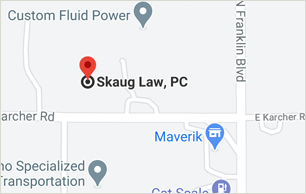Your Workers Comp Nerve Damage Settlement: A Comprehensive Guide
Last updated Thursday, May 23rd, 2024

If you’ve sustained nerve damage on the job, understanding your workers comp nerve damage settlement options is vital. Typically, compensation depends on the injury severity and the impact on your work life. This article will guide you through essential considerations for your settlement, common compensation ranges, and the claims process, providing clarity in a time that is often filled with uncertainty.
Key Takeaways
- Workers comp claims for nerve damage require proper understanding of eligibility criteria, adherence to reporting timelines, and documentation of work-related injuries, including immediate reporting and medical assessments.
- Compensation for nerve damage through workers comp can cover medical bills, rehabilitation costs, lost income, and disability benefits, and is influenced by the severity of the injury and its long-term effects on the individual’s work capacity.
- Maximizing a workers comp settlement for nerve injuries involves strategic legal representation and negotiation with insurance companies, considering the injury’s impact on life and work, and preparing for the possibility of disputes or denials.
Liability for emergency medical assistance by medically trained persons.
Have You Been Injured at Work?
Get Your Free Injury Case Review
Hire an experienced hurt on the job attorney that knows what needs to be done. The minute you sign with Skaug Law – we start working.
Navigating Workers Comp for Nerve Injury Claims
Imagine this: you’re working on a construction site, handling heavy machinery. Suddenly, an accident occurs, resulting in severe nerve damage. You’re in pain, unable to work, and faced with mounting medical bills. It’s a nightmare situation, isn’t it? But there’s a lifeline: workers comp.
Understanding the eligibility criteria and the process of filing your claim is a vital step towards successfully claiming compensation. But what exactly qualifies as a work-related nerve injury? How do you go about filing a claim? Let’s delve into these questions.
Eligibility Criteria for Workers Comp Claims

- Be classified as an employee
- Your employer must carry workers’ comp insurance
- Your injury must be work-related, encompassing a range of conditions from bone fractures to repetitive strain injuries
- Adhere to state-mandated reporting timelines
It might seem overwhelming, but remember, understanding these criteria is your first step towards claiming your rightful compensation.
Filing Your Claim: A Step-by-Step Guide
Armed with knowledge about the eligibility criteria, you can now proceed to file your claim. This process requires you to report your injury to your employer immediately, seek prompt medical attention, and complete the required claim forms. However, the process isn’t over after submission. Once your claim is submitted, the next step involves waiting for the insurance company’s decision.
If your claim is denied, don’t lose hope. You have the right to appeal the decision. Bear in mind, this process calls for patience and persistence.
The Anatomy of Nerve Damage Compensation
Have you ever wondered what actually constitutes nerve damage compensation? It’s not just about your medical bills. Workers comp for nerve damage covers a wide range of injuries and damages. Be it a pinched nerve or disabling nerve damage, workers comp covers your medical treatment costs, travel expenses for treatment, and provides disability benefits if your ability to work is compromised.
It’s a comprehensive system designed to support you in your time of need.
Types of Compensable Nerve Injuries
Nerve injuries are not one-size-fits-all. They range from minor tingling sensations to debilitating pain, including moderate nerve injuries. In the context of workers comp, compensable nerve injuries can be as varied as the individuals who suffer them. Workers comp coverage extends to a wide range of injuries, from neuropraxia sustained in an unfortunate fall to axonotmesis resulting from a workplace accident.
Keep in mind, all injuries, including traumatic injuries, regardless of their scale, are taken into account.
Covered Damages: From Medical Bills to Lost Wages
When you’re dealing with nerve damage, the last thing you need is financial stress. That’s why workers comp steps in to cover your damages. Workers comp provides coverage for various damages including:
- Medical bills
- Rehabilitation costs
- Lost income
- Disability benefits
It’s not just about reimbursing your medical costs, but also about compensating you for the impact on your ability to work and earn income.
Assessing the Severity: How Nerve Damage Is Evaluated
How do you measure pain? It’s a tough question, isn’t it? When it comes to nerve damage, the severity of the injury plays a crucial role in determining your compensation. This involves a thorough medical examination and a careful review of your medical history, including any instances of nerve pain.
Assessments, which include nerve conduction tests and imaging techniques, are conducted to gauge the extent of your nerve damage and its repercussions on your life.
The Role of Medical Examinations in Workers Comp Cases
Medical examinations aren’t just about diagnosing your injury. In the context of workers comp, they play a vital role in:
- Assessing the extent of your nerve damage
- Determining your eligibility for benefits
- Shedding light on the extent of your injury
- Understanding how it affects your capacity to work
Assessments, be it an Independent Medical Examination (IME) or a neurological examination, are crucial in this process.
Documenting the Impact: Medical Records and Expert Testimonies

- Medical records
- Expert testimonies
- Doctor’s notes
- Test reports
- Imaging scans
A comprehensive documentation helps illustrate the specifics of your injury and its influence on your life.
Estimating Your Settlement: Factors That Influence Payouts
What can you anticipate receiving from your workers’ comp claim? It’s important to understand the potential outcomes. The answer isn’t straightforward. Factors such as the severity of your injury, its long-term effects, and your role at work all influence your settlement amount. But don’t worry, we’re here to break it down for you.
The Severity of Nerve Damage and Its Long-Term Effects
The payout for nerve damage is significantly influenced by the severity of your injury and its long-term effects. From mild symptoms like tingling and numbness to more severe outcomes like chronic pain and paralysis, the impact of your injury on your daily life is a crucial factor in determining the average payout for nerve damage settlement amount.
It’s not just about how much you’ve suffered, but also about how much you’ll need to cope in the future, including future medical treatment.
The Intersection of Nerve Injuries and Workplace Roles
What does a construction worker and an office worker have in common? They could both suffer nerve injuries at work. But the impact of the injury on their ability to work can be vastly different. This is why the worker’s job role and the impact of the injury on their ability to perform work tasks also play a key role in determining the settlement amount.
Strategies to Maximize Your Workers Comp Settlement
With a firmer grasp on workers comp for nerve injuries, we can now focus on devising a strategy. How can you maximize your settlement? The answer lies in leveraging legal representation and negotiating with insurance companies.
We’ll delve deeper into these strategies.
Leveraging Legal Representation
Navigating the complexities of workers comp claims can be overwhelming. This is where the role of legal representation becomes significant. Hiring an experienced workers comp attorney can help you navigate the complex claims process, gather necessary evidence, and secure a fair settlement.
The importance of expert legal advice cannot be overstated.
Negotiating with Insurance Companies
Insurance companies are not your enemy, but they’re not exactly your friend either. They’re businesses, and like all businesses, they’re looking to minimize costs. That’s why negotiation is crucial.
Efficient negotiation with insurance companies can help you secure the maximum compensation for your nerve damage claim, potentially leading to a successful nerve damage settlement and nerve damage lawsuit.
Real-World Settlement Examples
What does a workers comp settlement for nerve injuries look like in the real world? Let’s examine some real-world cases. These cases shed light on potential compensation for both minor and severe nerve injuries, providing you with a clearer picture of what your own claim might look like.
Minor Injuries Versus Severe Pain and Disability
In the world of workers comp, not all injuries are created equal. Minor nerve injuries can result in settlements averaging around $20,000, while severe injuries causing chronic pain and disability can lead to significantly higher settlements. It’s not just about the injury itself, but also about its impact on your life and ability to work.
Chronic Pain and Permanent Disability Cases
When it comes to chronic pain and permanent disability, the stakes are even higher. These cases often result in higher workers compensation settlement amounts due to the long-term impact on the worker’s life. With average settlements typically ranging from $20,000 and awards reaching over $61,000, it’s clear that workers comp takes these severe cases seriously.
Preparing for Possible Challenges
Like any legal endeavor, workers comp claims for nerve injuries present their own set of challenges. From proving the extent of your injury to dealing with disputes and denials, it’s important to be prepared for potential obstacles. Rest assured, we will guide you through these challenges.
Proving the Extent of Nerve Damage
Establishing the extent of your nerve damage, such as carpal tunnel syndrome, can pose a challenge, especially if you have suffered nerve damage. It requires thorough medical examinations and documentation of your symptoms to prove nerve damage. But it’s not just about the medical evidence.
You’ll also need to show how your nerve damage has affected your life and ability to work.
Dealing with Disputes and Denials
Even with all the right evidence, you may still face disputes or denials from insurance companies. However, with persistent efforts and appropriate legal assistance, these challenges can be surmounted to secure the compensation you deserve.
Understanding the Timeline: From Injury to Settlement
Time is of the essence in workers comp claims. From the moment you sustain your nerve injury to the settlement of your claim, the timeline can vary greatly depending on factors such as the severity of your injury and the complexity of your claim.
Comprehending this timeline aids in managing expectations and facilitating a more effective navigation of the process.

